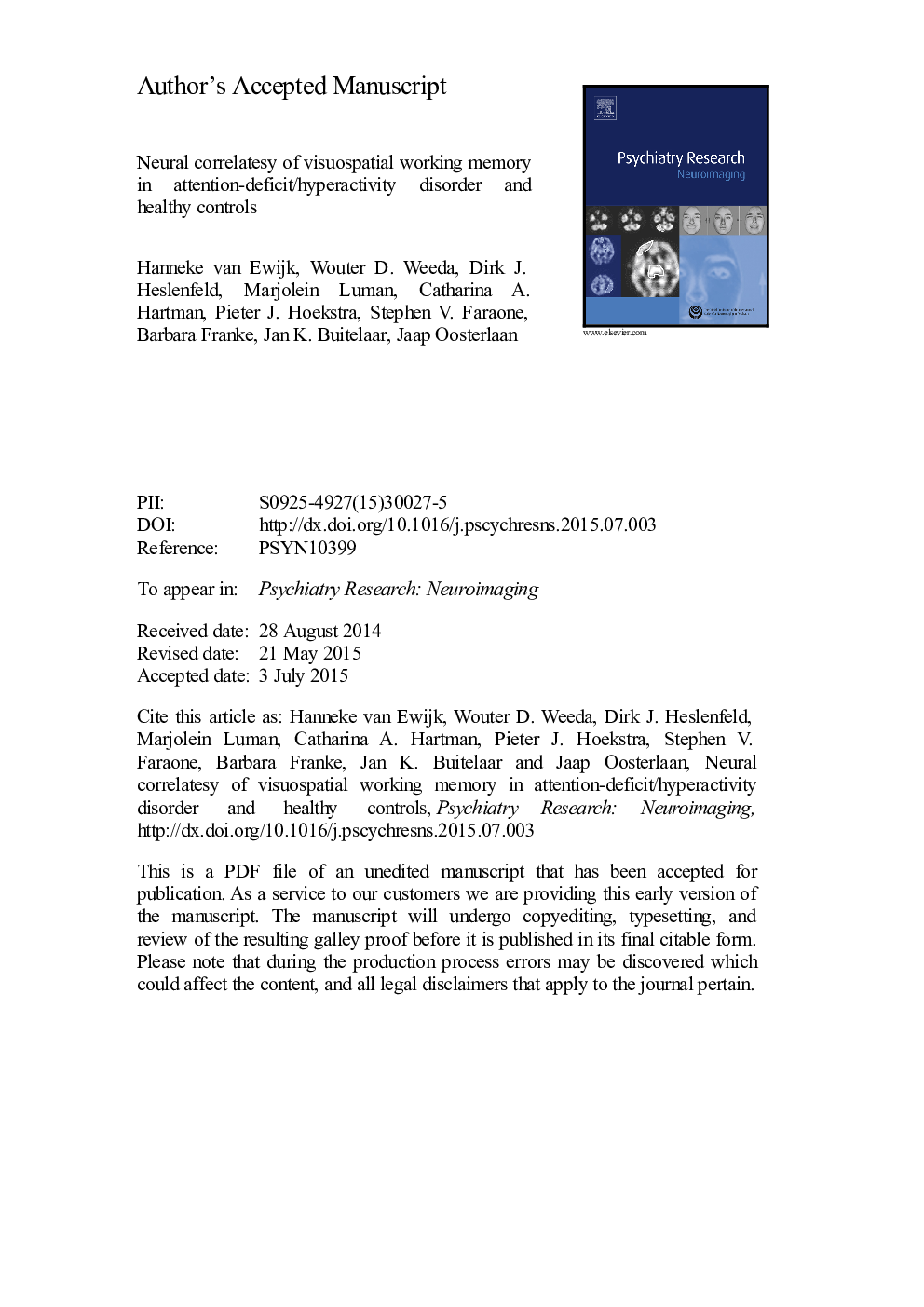| Article ID | Journal | Published Year | Pages | File Type |
|---|---|---|---|---|
| 10305371 | Psychiatry Research: Neuroimaging | 2015 | 32 Pages |
Abstract
Impaired visuospatial working memory (VSWM) is suggested to be a core neurocognitive deficit in attention-deficit/hyperactivity disorder (ADHD), yet the underlying neural activation patterns are poorly understood. Furthermore, it is unclear to what extent age and gender effects may play a role in VSWM-related brain abnormalities in ADHD. Functional magnetic resonance imaging (fMRI) data were collected from 109 individuals with ADHD (60% male) and 103 controls (53% male), aged 8-25 years, during a spatial span working memory task. VSWM-related brain activation was found in a widespread network, which was more widespread compared with N-back tasks used in the previous literature. Higher brain activation was associated with higher age and male gender. In comparison with controls, individuals with ADHD showed greater activation in the left inferior frontal gyrus (IFG) and the lateral frontal pole during memory load increase, effects explained by reduced activation on the low memory load in the IFG pars triangularis and increased activation during high load in the IFG pars opercularis. Age and gender effects did not differ between controls and individuals with ADHD. Results indicate that individuals with ADHD have difficulty in efficiently and sufficiently recruiting left inferior frontal brain regions with increasing task difficulty.
Related Topics
Life Sciences
Neuroscience
Biological Psychiatry
Authors
Hanneke van Ewijk, Wouter D. Weeda, Dirk J. Heslenfeld, Marjolein Luman, Catharina A. Hartman, Pieter J. Hoekstra, Stephen V. Faraone, Barbara Franke, Jan K. Buitelaar, Jaap Oosterlaan,
